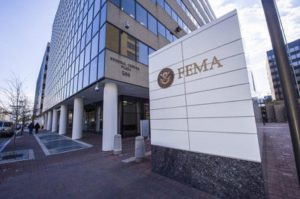
WASHINGTON, May 16, 2024 – The general manager of a telecommunications company owned by the Omaha Tribe emphasized at a National Telecommunications and Information Administration event on Wednesday how a federal grant for middle mile infrastructure is expanding opportunities for his community.
The Omaha Tribe of Nebraska received over $36 million to build middle mile infrastructure connecting the Omaha reservation and its three communities to surrounding cities and data centers under the Enabling Middle Mile Broadband Infrastructure Program.
Through the Tribal owned telecommunications company, Quick Current, the project is building 384 miles of new fiber, 100 miles of IRU dark fiber (fiber cables to be leased out), and 34 miles of upgraded fiber across tribal and rural areas of eastern Nebraska and western Ohio.

The middle mile grants were first announced in June 2023, provided $980 million to 40 States and Puerto Rico to construct and improve middle mile infrastructure in underserved communities.
“[The community] has been excited about the fact that their tribe is going to be able to have this company… to provide themselves with their own internet access,” said Ruben Zendejas, general manager for Quick Current Nebraska.
According to Zendejas, the Covid-19 pandemic became a wakeup call, as many members of the community found the available internet infrastructure to be insufficient for online work and schooling. This apparent stagnation facilitated the creation of the Tribally-owned telecom company.
As a tribal-led endeavor, the infrastructure buildout has brought multi-aspect benefits to the community, said Zendejas. To fulfill the project, Quick Current expanded and hired ten new employees and provided them each with fiber technician training. Partnering with Corning Optical, Quick Current employees attended a two-week workshop in Corning’s North Carolina facilities.

“Providing these essential skills to our own citizens, to help our company, to help the tribe. It’s a valuable skill for them in an emerging market.” Zendejas said.
Zendejas said he has plans to continue expanding infrastructure for the tribe and surrounding areas beyond the current initiative, and ultimately hopes to partner with reservation high schools and community colleges.
“We hope to be able to implement internships with the high school and the community college to bring kids in that are starting out, to get them involved in this process,” Zendejas said.
Zendejas envisions citizens from within the reservation continuing infrastructure projects in the future.
More reflections on middle mile grant use
Michelle Simon, director of the Pima County Office of Digital Inclusion, described its efforts to utilize its grant funds and connect their 9000 square mile Arizona county. Its goal was to provide equal access to internet connectivity for those living outside urban areas.
Pima County has a variety of obstacles hindering infrastructure growth, including diverse terrain such as deserts, grasslands and mountain ranges, as well as a variety of federally owned lands, Indian reservations and archeological sites. The team collaborated with a myriad of offices to navigate these challenges and build a carrier neutral, open access fiber network infrastructure out of the allocated $30.3 million, Simon said.
Beyond building infrastructure, Pima County has focused on implementing digital literacy and skill building initiatives and increasing access to devices, according to Simon.
Representatives of the telecommunications provider, Quintillion, also shared their efforts to complete a fiber beltway around the state of Alaska during the webinar. Due to its size, Alaska was the largest recipient of the middle mile grant, at $89 million. Quintillion is matching the grant with $61 million to build 1065 miles of fiber, 105 terrestrial and 960 subsea, under their Nome to Homer Express project.
Quintillion is currently in a phase of planning, performing mariner surveys as well as cultural studies, to ensure historically significant sites are not disrupted.


